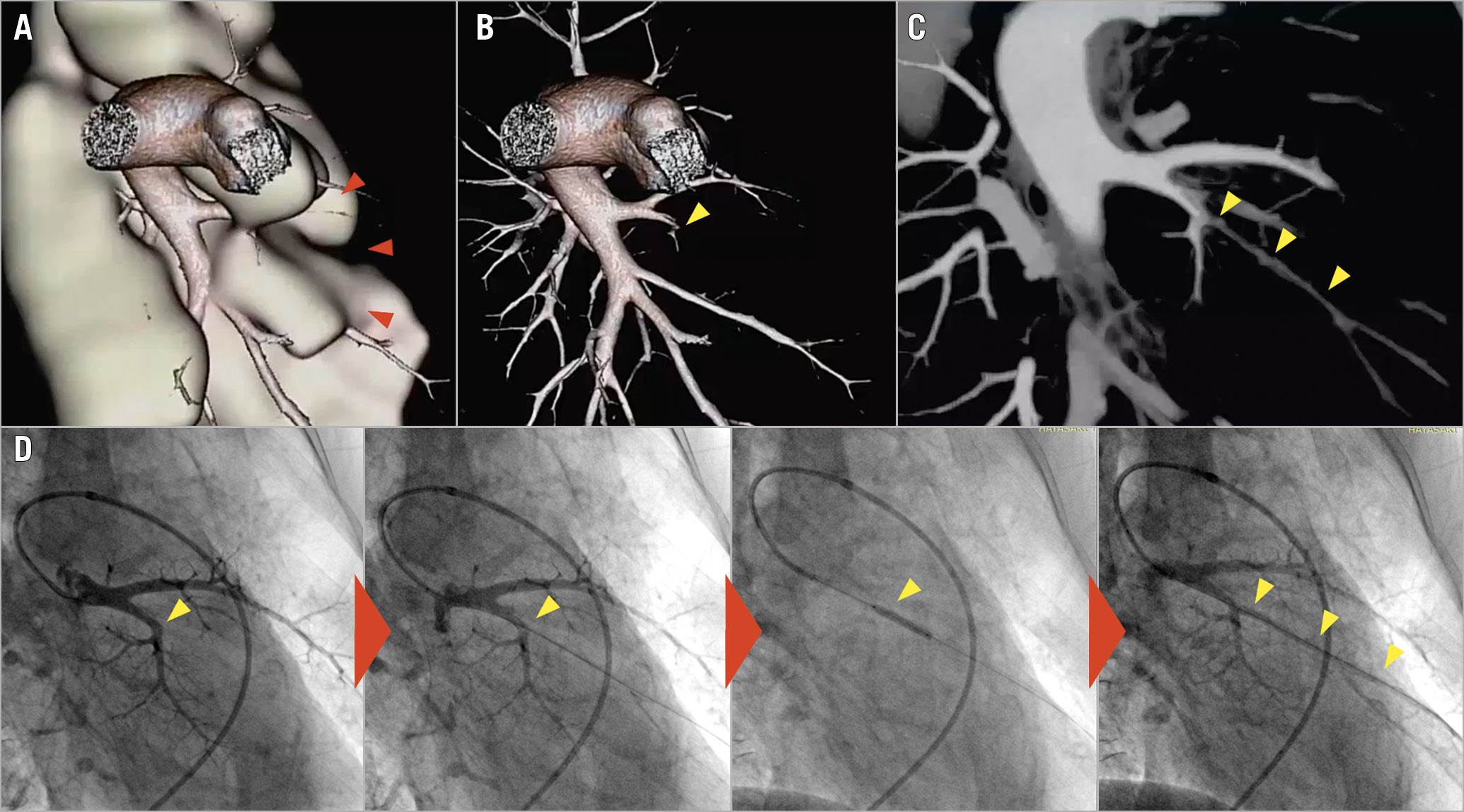
Figure 1. Multistaged BPA strategy with multimodalities for a total occlusion. A) Three-dimensional perfusion SPECT/CTPA fusion image. B) Volume-rendered image of CTPA. C) CTPA-MIP image. D) MIP-guided BPA.
A 56-year-old man with chronic thromboembolic pulmonary hypertension (CTEPH) was admitted to our hospital. Balloon pulmonary angioplasty (BPA) performed twice decreased the mean pulmonary artery pressure (PAP) from 37 to 20 mmHg and pulmonary vascular resistance (PVR) from 3.2 to 2.7 Wood units. However, he showed persistent exercise intolerance (World Health Organization [WHO] functional class III). We performed perfusion single photon emission computed tomography (SPECT) and CT pulmonary angiography (CTPA) and found some residual lesions, including a total occlusion. We carried out a three-step strategy using these modalities in relation to the total occlusion: 1) three-dimensional perfusion SPECT/CTPA fusion imaging which suggested the presence of the totally occluded vessel (Figure 1A, red arrowheads; Figure 1B, yellow arrowhead); 2) maximum intensity projection (MIP) imaging reconstructed from the CTPA which showed the distal concealed vascular running of the occluded vessel (Figure 1C); and 3) MIP-guided BPA (Figure 1D, Moving image 1, Moving image 2). After an additional BPA, exercise tolerance was restored, and mean PAP and PVR improved to 16 mmHg and 1.7 Wood units, respectively.
BPA is now widely performed to treat inoperable CTEPH. Nevertheless, sufficient revascularisation is often not achieved, resulting in residual pulmonary hypertension and/or persistent exercise intolerance. In particular, “totally occluded vessels” can be missed on catheter-based pulmonary angiography, even by experienced interventionists. In addition, there continues to be a high rate of complications (6.0%) and unsuccessful procedures (52.2%) in BPA to totally occluded lesions1. The main reason for these problems is that the vessel distal to the occluded lesions is invisible on catheter-based pulmonary angiography. Therefore, a dedicated strategy is needed for effective and safe BPA procedures to totally occluded lesions. The present strategy clarifies the positional relationships between the perfusion defects and pulmonary arteries, and helps to visualise the distal running of the occluded vessel. Thus, this strategy promises safe and effective BPA. This type of technology has been available for years but has never been used in CTEPH. The combination of a multistaged approach with enhanced/virtual reality is challenging but would facilitate safe and effective BPA in CTEPH.
Conflict of interest statement
The authors have no conflicts of interest to declare.
Supplementary data
To read the full content of this article, please download the PDF.
Moving image 1. Three-dimensional perfusion SPECT/CTPA fusion image and CTPA-MIP image.
Moving image 2. CTPA-MIP-guided BPA.

